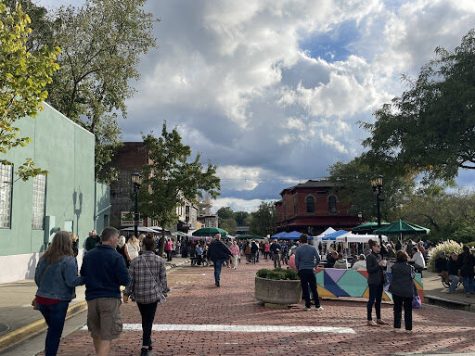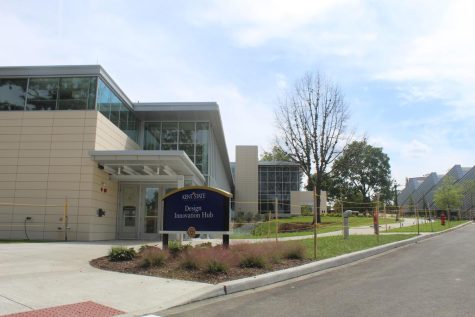Changes to class sizes, building layouts aim to decrease spread of COVID-19
August 3, 2020
Even in-person classes at Kent State will look a lot different than normal this upcoming fall semester.
“The biggest thing that will affect the students primarily is the occupancy of the classrooms,” Michael Bruder, the executive director of Facilities, Planning and Design
and University Architect, said. “In order to provide for six feet of physical distance between all the students, we had to reevaluate the seating capacities in all the classrooms.”
The seating capacity of most classrooms was bumped down to 25 percent of what they used to be. Because of the decrease in space, a lot of classes had to go remote for the semester. And for the classes that do remain in person, not every seat in the classroom will be available for use.
“There’s going to be stickers in all the classrooms that identify for students which seats are available for use and which ones are not in use, so that it’s clear,” Bruder said. “And then those numbers have been shared with the registrar and academic affairs, so all the faculty are aware of that.”
The maximum occupancy of each room will be posted for everyone to see. In addition to the changed seating arrangements, each building will have additional “sanitization stations.” Wipes, disinfecting spray and additional hand sanitizing stations will be available throughout the buildings.
“We’re going to ask students to disinfect their own station with a wipe,” Bruder said. “Faculty will be doing it, so that it can happen after every class. We wouldn’t be able to deploy custodians into every classroom after every class, it would just be impractical.”
If a student, faculty member or staff member becomes infected with COVID-19 and it is known that they were in a certain building or classroom, additional precautions will be taken.
“There’s a team of custodians who have been trained and then they would suit up into appropriate personal protective equipment and then they would go in and sanitize the building, through some traditional cleaning techniques as well as, I think they are called DINC foggers, that would kill it.” Bruder said. “We would do that if a building is critical to come back online the next day.”
If a building is not needed for use the next day, Bruder said it could be possible to close and lock the building for seven days.
“The virus couldn’t survive that time,” Bruder said. “So then, you could just open it back up. But it really kind of depends upon the specific circumstances of whatever the case is.”
Despite these changes and precautions, every building should be open by August 27, ready for students to return to class.
“The administration and all the faculty and staff, everybody’s been working very, very hard all summer to try and provide the best possible experience for students and provide the safest possible experience for everybody,” Bruder said.



















